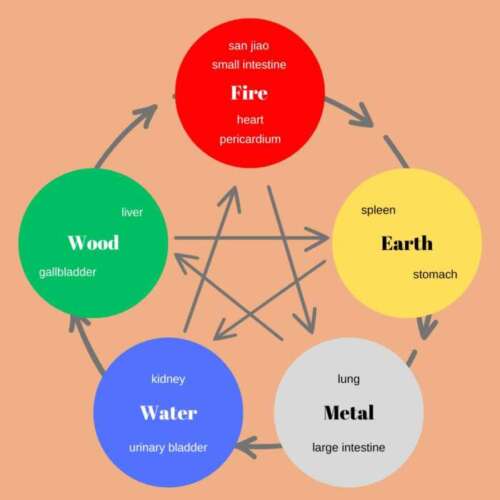
Language is used to relay thoughts, feelings and intentions to one another on a daily basis. But sometimes there are hidden meanings that can get lost in translation. This is particularly evident in East Asian Medicine, where our organs have a different meaning from what we understand in Western Medicine. Let’s explore the organ pairs in East Asian Medicine and differentiate each of them from their literal equivalents.
In East Asian Medicine (EAM), the organs work as a pair. One is considered yin and the other is considered yang in their functions. Yang organs are the ones that are considered empty or hollow, like the bladder or large intestine. Yin organs are the ones that are considered full, such as the heart and spleen. Another notable difference is that in Western Medicine, there is not association of any organ with emotions or how those emotions affect the body. EAM looks at these associations closely because they can negatively impact the physical body.
Lungs / Large Intestine – The lungs control breathing, regulate energy (also known as qi) and open to the nose. The large intestine has the function of receiving waste and excreting waste, as well as letting go of longstanding emotions that can cause stagnation. The lung / large intestine pair are also closely connected to the emotions of grief, sadness and anxiety. The Western equivalent of the lungs is the same. However, the large intestine is just seen as another organ in the body that is responsible for physical waste.
Stomach / Spleen – The stomach functions in receiving and descending food, while the spleen transforms the food into nutrients for the body. In EAM, the spleen also governs the muscles and limbs. The stomach / spleen pair are closely connected to the emotion of worry. In contrast, in Western understanding, the stomach digests food, while the spleen serves as an immune related organ.
Heart / Small Intestine – The heart is the ruler of the body and spirit and the small intestine is responsible for receiving and transforming food. In EAM, the heart also has the functions of housing the mind and controlling blood circulation. The heart / small intestine pair is connected to the emotions of joy and happiness. In Western medicine, the heart is only responsible for circulation of blood throughout the body and the small intestine is responsible for breaking down food and absorbing nutrients.
Bladder / Kidneys – The bladder is responsible for excretion and the kidneys are considered the foundation of Yin and Yang. The kidneys also have the functions of governing bones, marrow and the reproductive system. The bladder / kidneys are connected to the emotions of fear and fright. In Western medicine, the bladder and kidneys are responsible for urinary function and waste management only.
San Jiao (Triple Burner) / Pericardium – The triple burner and pericardium are two unique organs in EAM that are not found in Western medicine. The triple burner is a three-part organ that regulates water metabolism throughout the body. And the pericardium is known as the heart protector, having the function of protecting the heart, mind and spirit. The holy grail of EAM is the balance of the three burners, which is imperative for a healthy body and mind. The san jiao / pericardium pair is also connected to the emotions of joy and happiness.
Liver / Gallbladder – The liver and gallbladder manage digestion in EAM. The liver regulates energy and blood circulation, which is integral to health. The gallbladder has the function of storing and secreting bile, which helps break down and digest fats. The liver / gallbladder pair is closely connected to the emotions of anger and frustration. In Western medicine, the liver is responsible for detoxification and the gallbladder’s function is only linked to fat digestion.
As you can see, while there are some similarities, it’s not across the board. This is why it’s important to understand what your East Asian Medical practitioner is talking about. It’s essential to remember that our terminology sounds the same as the Western words, but the meanings can be radically different. Understanding these different organ pairs’ roles and functions is crucial when it comes to EAM treatment.

